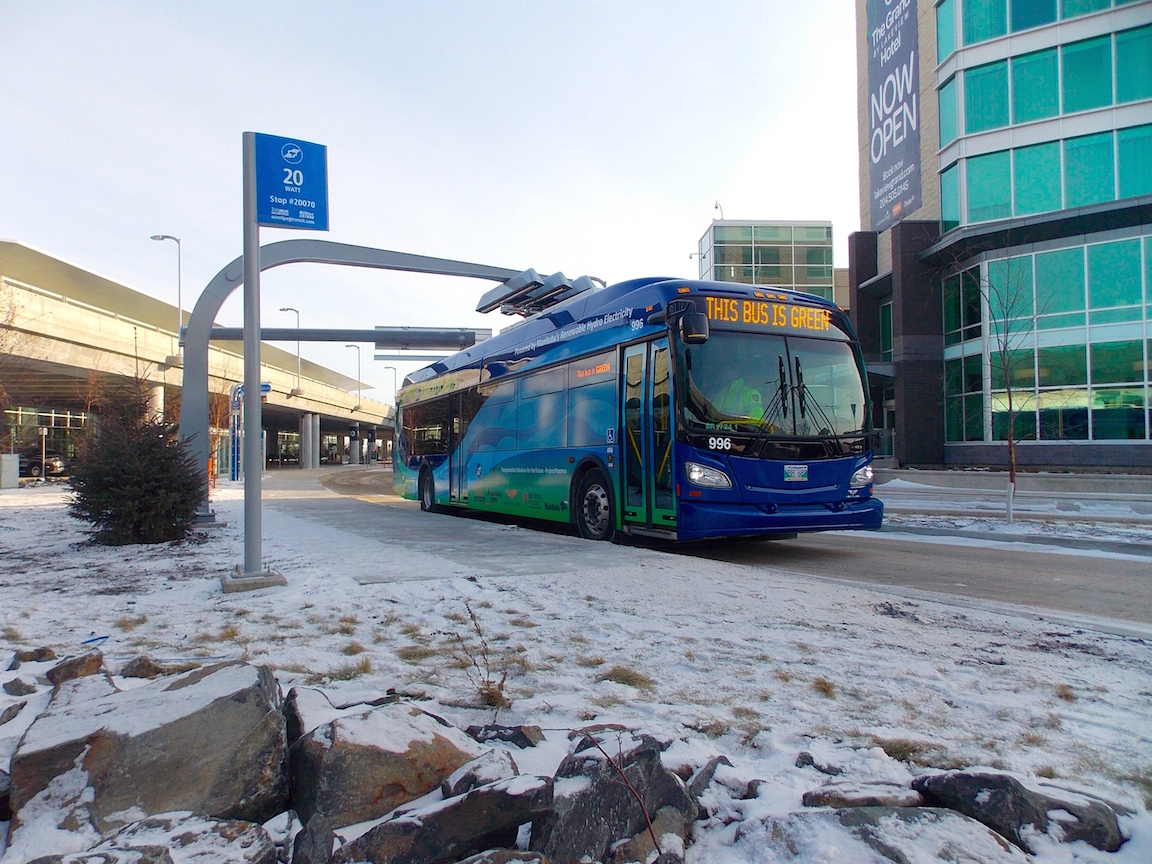A milestone has been reached in the development of electric mobility in Berlin with the commissioning of the world's first wirelessly charged electric bus in a capital city. The Berlin Transport Authority, Berliner Verkehrsbetriebe (BVG), has positioned itself as a pioneer in urban mobility by introducing four Solaris Urbino 12 electric buses equipped with the BOMBARDIER PRIMOVE inductive charging system and traction equipment from Vossloh Kiepe. Moreover, the new e-buses will significantly improve the city’s environmental performance. The project is funded by the Federal Ministry of Transport and Digital Infrastructure.
BVG already transports around two-thirds of its passengers electrically with subways or trams, as well as with its four solar-powered ferries. Starting Monday, August 31, Germany's biggest transport company now also runs electric buses. Line 204 between Südkreuz and Zoologischer Garten (Hertzallee) now operates exclusively with electric buses. Thanks to Vossloh Kiepe’s electric drive, these vehicles are not only emission-free, but also produce low vibration and noise, benefitting passengers, local residents and the environment at the same time.
The buses charge like an electric toothbrush at home, wirelessly and contactless, but with a far greater capacity and performance. At the end stops, Bombardier’s inductive PRIMOVE technology enables the buses to recharge in just a few minutes.
State Secretary Rainer Bomba, Federal Ministry of Transport and Digital Infrastructure, explained: "The Federal Ministry of Transport is funding the project with a total of about 4.1 million euros. We want to promote electric mobility in public transport with projects like this. The wireless charging technology that will be used from now, on the line 204, provides low-emission and low-noise transport. This will benefit local residents and transport stakeholders alike."
Rainer Bomba, State Secretary at Federal Ministry of Transport and Digital Infrastructure, Andreas Geisel, Senator for Urban Development and Environment, and Cornelia Yzer, Senator for Economics, Technology and Research, all sent the first e-bus from its charging station at Berlin’s Südkreuz station off to its fixed-route service through the city. As the diesel buses were gradually replaced, line 204 was finally electrified completely.
“I am delighted that the electric buses and the inductive charging devices will start operating today. Electric buses on the streets of Berlin are part of a package of measures to facilitate a breakthrough of this environmentally friendly technology. To get the maximum benefit from this practical use, I have also pledged, to the BVG, to support the co-financing of the project from mid-2016, after the Federal funding, until 2023", said Senator Geisel.
Senator Yzer: "Berlin starts as the world's first capital city to put a complete line of wireless e-charged buses in operation. Thus, we document our claim as a Smart City and as a reference location for the implementation of the energy turnaround. In the German capital city, we can test pilot developments in transparent structures and prepare them for global applications. Besides 'Made in Berlin' also 'Tested in Berlin' is a valid seal of approval."
On the 6.1-km long route through the inner city, passengers now have 18 stops to get on and off and to enjoy the e-buses’ quiet and smooth ride. Worries that the vehicles could run out of power in traffic or while on the road are just as unfounded as concerns about the charging technology itself. The PRIMOVE battery system, with a total capacity of 90 kilowatt hours, offers sufficient energy reserves to handle even Berlin’s most demanding routes. In addition, the wireless charging system is well shielded so that the electromagnetic radiation is lower than that of a conventional induction cooker. To fully charge the batteries overnight and air condition the passenger compartment before starting operation, four stationary and one mobile charging station were also installed by Vossloh Kiepe at the BVG depot. There the buses are supplied with power via charging cables.
Like all BVG’s electric powered vehicles, the new Solaris Urbino 12 electrics are powered exclusively with green electricity. Within one year, the four electric buses on the line 204 will cover at a total of approx. 200,000 kilometres, saving 260 tons of CO2 emissions. Approximately 250 private cars would have to be electrified to reach the same effect. Furthermore, because the e-bus is as quiet as an average car, noise pollution has been reduced as well. As a precaution, an external speaker has been installed enabling the driver to announce the approach to a stop
The pilot project "E-Bus Berlin" will also provide valuable experience about the operation of battery buses and the Technical University of Berlin, whose research helped determined the necessary charging time and capacity of batteries, is now carrying out a technical and economic evaluation of the project. The operational phase of the e-bus 204 as part of the "Internationalen Schaufensters Elektromobilität Berlin-Brandenburg" will run until autumn 2016.








